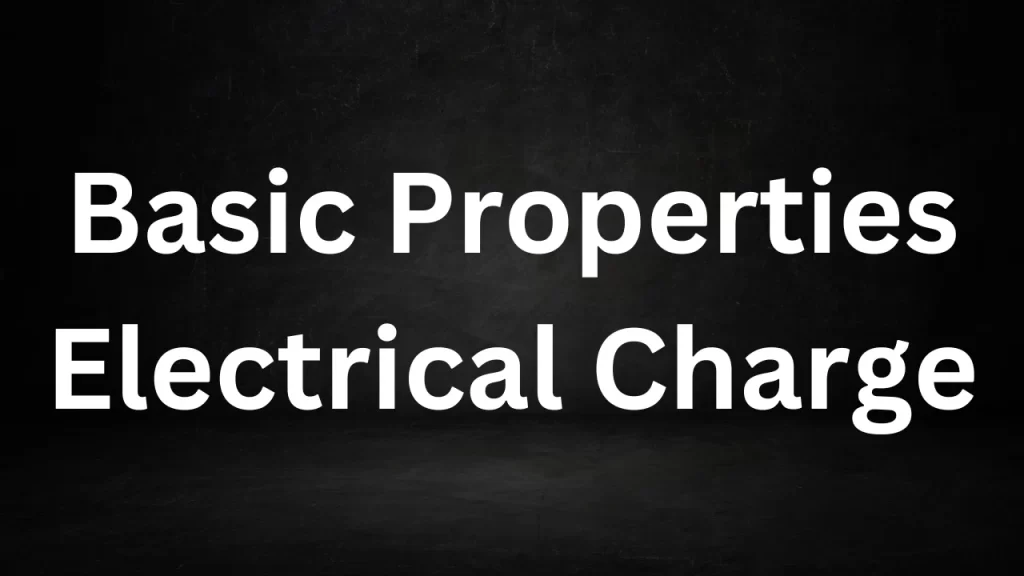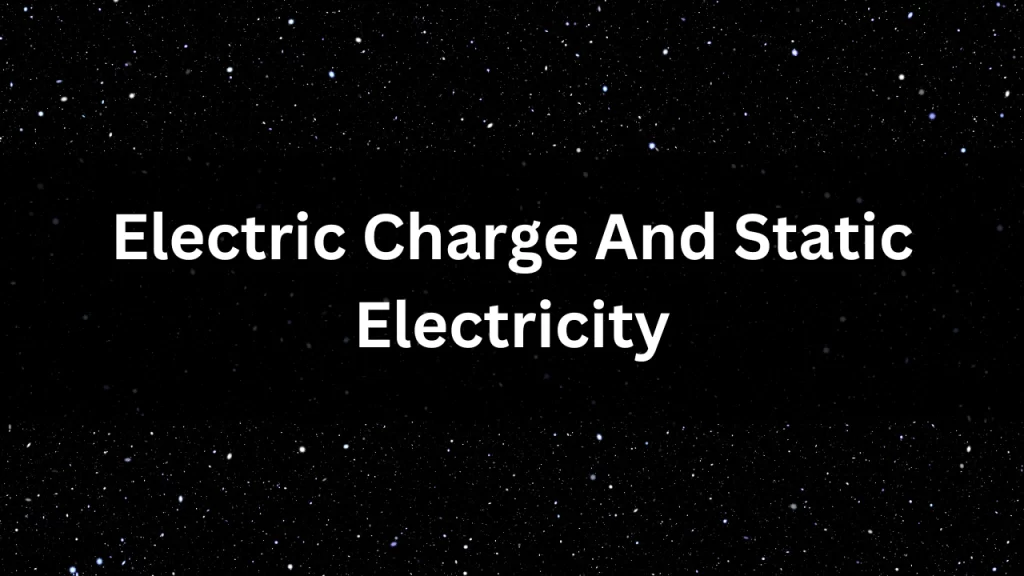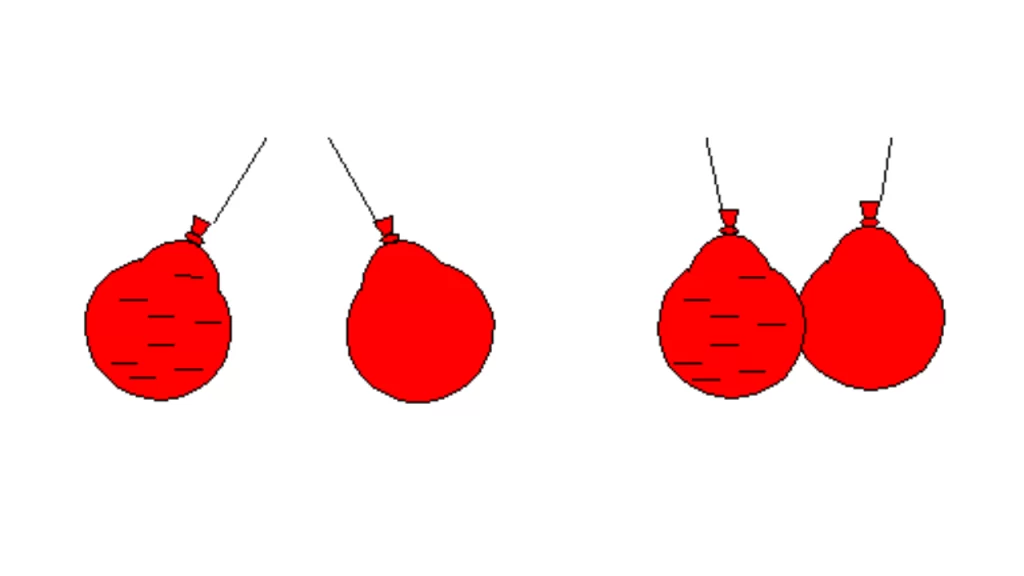Tag: static electric charge
Basic Properties Electrical Charge
Basic Properties Electrical Charge: Electrical charge is a fundamental concept in physics, and it plays a central role in understanding the behavior of matter and the functioning of electrical and electronic devices.
To comprehend electrical phenomena, it’s essential to grasp the basic properties of electrical charge. Here are the key properties of electrical charge:

Basic Properties Electrical Charge
1. Quantization:
Electrical charge is quantized, meaning it exists in discrete, indivisible units. The smallest unit of charge is the charge of an electron (e), which is approximately -1.602 x 10^-19 coulombs (C). Protons have an equal but opposite charge, +1.602 x 10^-19 C.
2. Polarity:
There are two types of electrical charge: positive and negative. Protons carry positive charge (+e), while electrons carry negative charge (-e). Like charges repel each other, and opposite charges attract.
3. Conservation:
The principle of conservation of charge states that the total electric charge in a closed system remains constant. Charge cannot be created or destroyed, only transferred from one object to another. This principle is a fundamental law of nature.
4. Additivity:
Electrical charge is additive. When multiple charges are present, the total charge is the algebraic sum of all individual charges. If you have a +2e charge and a -3e charge, the total charge is -e.
5. Coulomb’s Law:
Coulomb’s law describes the force between two charged objects. It states that the force (F) between two point charges is directly proportional to the product of their magnitudes (q1 and q2) and inversely proportional to the square of the distance (r) between them. Mathematically, it’s expressed as:
- F = k * |q1 * q2| / r^2
- Where k is Coulomb’s constant.
6. Induction:
Electrical charge can be induced in a neutral object by bringing a charged object near it without direct contact. This process is the basis for the function of many electrical devices, such as capacitors and electrometers.
7. Conduction:
Electrical charge can be transferred between objects through direct contact. When a charged object touches another object, charge can flow from one to the other, equalizing their charge distribution.
8. Repulsion and Attraction:
Objects with the same type of charge (either both positive or both negative) will repel each other, while objects with opposite charges will attract each other. This principle governs the behavior of charged particles.
9. Electrostatic Equilibrium:
In electrostatic equilibrium, there is no net movement of charge within an object. The electric field within the object is zero, and charges are distributed such that there is no repulsion or attraction between them.
10. Electrostatic Force:
The force between charged objects is mediated by the electromagnetic force, one of the four fundamental forces in nature. This force is responsible for all electrical and magnetic interactions.
Understanding these basic properties of electrical charge is fundamental to comprehending the behavior of matter, electricity, and electromagnetic phenomena. These principles are essential in fields such as physics, engineering, and electronics, where electrical charge plays a pivotal role in creating and controlling various technologies.
Read More
- Anatomy Of Flowering Plants
- Elastic Behaviour Of Materials
- Molecular Weight Of Oxalic Acid
- Structural Organisation In Animals
- CBSE Sample Papers for Class 11 English With Answers PDF
Frequently Asked Question (FAQs) Basic Properties Electrical Charge
1. What is electrical charge, and why is it important in physics?
Electrical charge is a fundamental property of matter, and it plays a crucial role in explaining the behavior of particles and the functioning of electrical and electronic devices. It is the basis for the study of electromagnetism in physics.
2. Are there different types of electrical charge?
There are two types of electrical charge: positive and negative. Protons carry positive charge, while electrons carry negative charge. Like charges repel each other, and opposite charges attract.
3. Can electrical charge be created or destroyed?
No, electrical charge is conserved. According to the principle of conservation of charge, the total electric charge in a closed system remains constant. Charge cannot be created or destroyed; it can only be transferred from one object to another.
4. How is electrical charge quantized?
Electrical charge is quantized, which means it exists in discrete, indivisible units. The elementary charge is the charge of an electron (e) and has a value of approximately -1.602 x 10^-19 coulombs (C).
5. What happens when you bring two charged objects close to each other?
When two charged objects are brought close to each other, they exert electrostatic forces on each other. Like charges will repel each other, while opposite charges will attract.
Electric Charge And Static Electricity Class 10
Electric Charge And Static Electricity: Certainly, I’d be happy to provide a more detailed explanation of electric charge and static electricity.

Electric Charge And Static Electricity
Definition of Electric Charge:
The Electric charge is a fundamental property of subatomic particles, such as electrons and protons. It is a property that gives rise to electromagnetic interactions between particles. There are two types of electric charge:
Positive Charge:
This is the type of charge that protons possess. Protons have a positive electric charge.
Negative Charge:
This is the type of charge that electrons possess. Electrons have a negative electric charge.
Electric charges interact with each other through electromagnetic forces. Like charges repel each other (positive repels positive or negative repels negative), and opposite charges attract each other (positive attracts negative).
Static Electricity:

Static electricity is a phenomenon that occurs when there is an imbalance of electric charge on the surface of an object.
This imbalance can happen due to various processes, including friction, contact, and induction. Here’s how it works:
What is Friction in Electric Charge And Static Electricity:
When two materials rub against each other, electrons can be transferred from one material to the other.
The material that gains electrons becomes negatively charged, and the material that loses electrons becomes positively charged.
For example, when you rub a balloon against your hair, electrons from your hair are transferred to the balloon, leaving your hair with a positive charge and the balloon with a negative charge.
Contact:
When two objects with different charges come into contact, electrons can move from one object to the other until their charges become more balanced.
This can result in one object becoming positively charged and the other becoming negatively charged.
Induction:
Induction involves the redistribution of charges within an object without direct contact with another charged object.
When a charged object is brought near a neutral object, the charges within the neutral object can shift, causing one side to become more positively charged and the other side more negatively charged.
Static electricity is more noticeable in certain conditions, such as when the air is dry, because dry air is a poor conductor of electricity. This means that electric charges do not easily flow through the air, allowing them to accumulate on the surface of objects.
Common examples of Electric Charge And Static Electricity include:
- Getting a shock when you touch a doorknob after walking across a carpet.
- Seeing your hair stand on end when you rub a balloon against it.
- Observing sparks when you touch a metal object after shuffling your feet on a rug.
Static electricity has various applications and implications, from industrial processes to everyday phenomena like lightning during storms.
It’s important to manage static electricity in certain contexts to prevent hazards, such as the ignition of flammable materials.
Read more.
- CBSE Class 10 Basic Maths Question Paper 2020 With Solutions
- CBSE Social Science Class 10 Question Paper 2020 With Answers
- 10th Class All Subject Books Hindi Medium NCERT PDF Download
- Class 10 All Subjects Books NCERT PDF Download in English
Frequency Question FAQ Electric Charge And Static Electricity
What is electric charge?
Electric charge is a fundamental property of subatomic particles, such as electrons and protons. It is responsible for electromagnetic interactions between particles and is categorized as positive or negative.
What are positive and negative charges?
Positive charges are associated with protons, while negative charges are associated with electrons. Like charges repel each other, and opposite charges attract each other.
What is static electricity in Electric Charge And Static Electricity?
Static electricity refers to the accumulation of electric charge on the surface of an object due to processes like friction, contact, or induction. It is characterized by an imbalance of charges, resulting in attractive or repulsive forces.
How does static electricity occur?
Static electricity can occur through processes like friction, where materials rub against each other and exchange electrons. Contact between objects with different charges can also lead to static buildup. Induction involves redistributing charges within an object without direct contact.
Why is static electricity more noticeable in dry conditions?
Dry air is a poor conductor of electricity, so electric charges do not easily dissipate into the environment. This allows charges to accumulate on the surfaces of objects, leading to a greater buildup of static electricity.